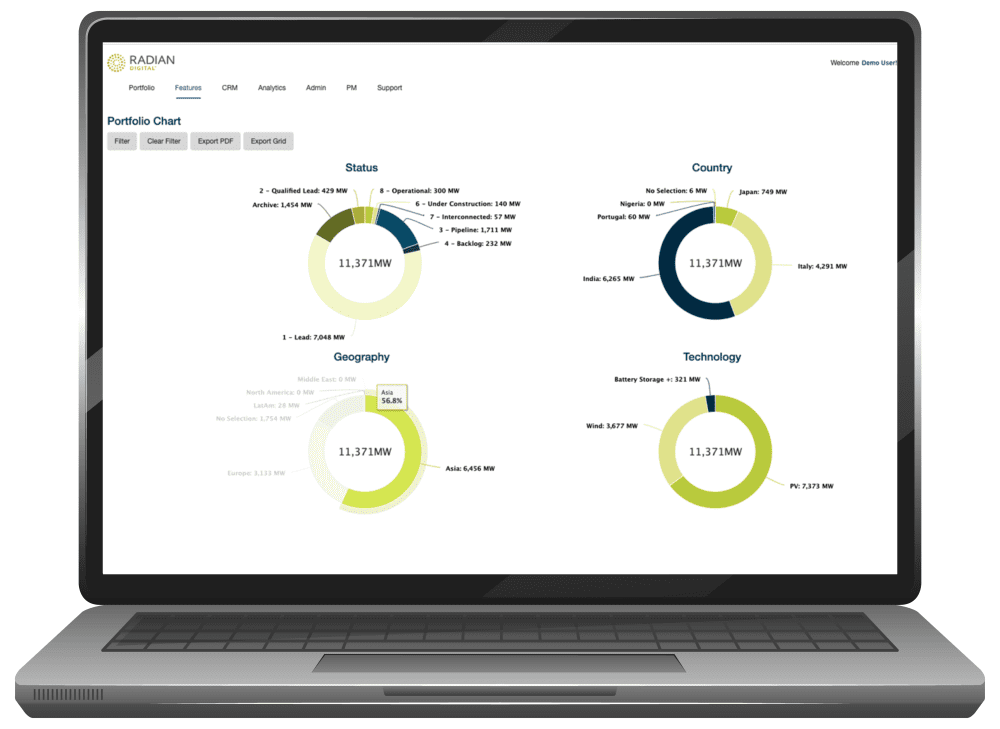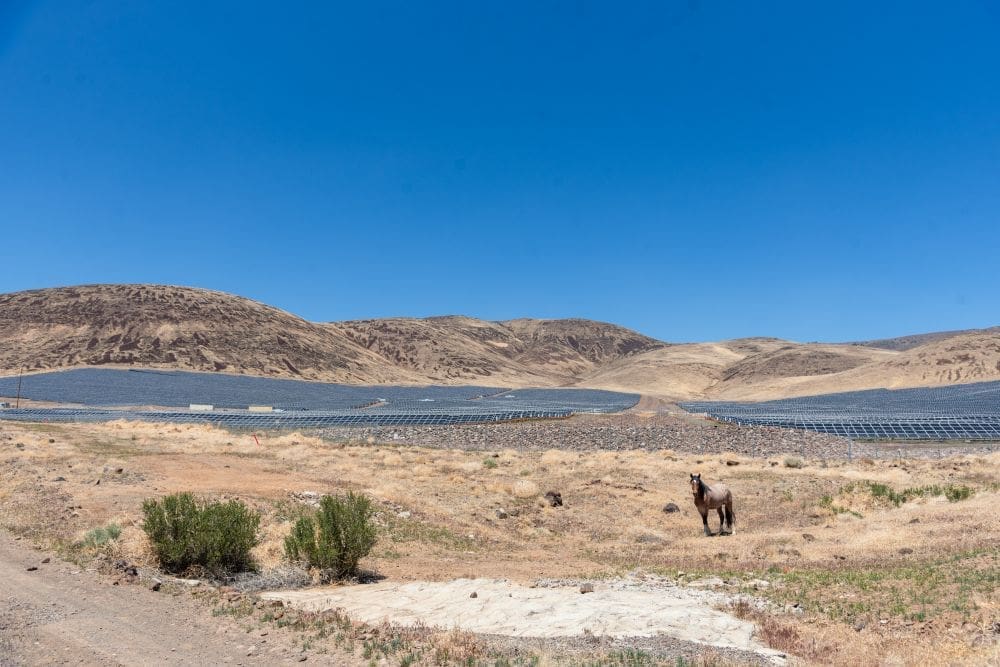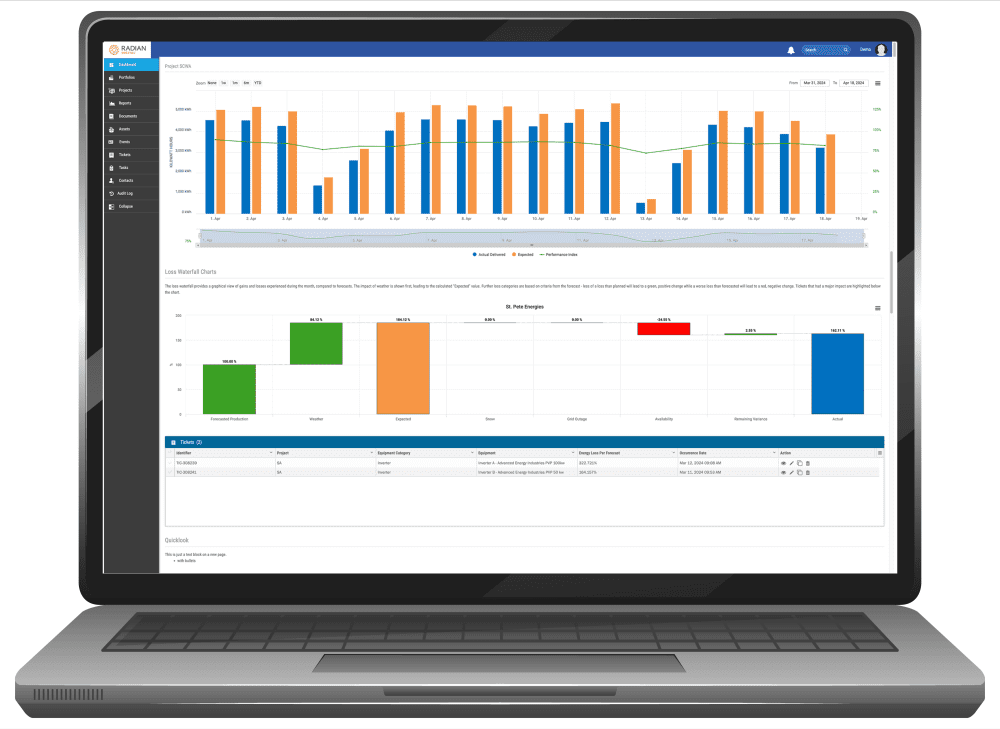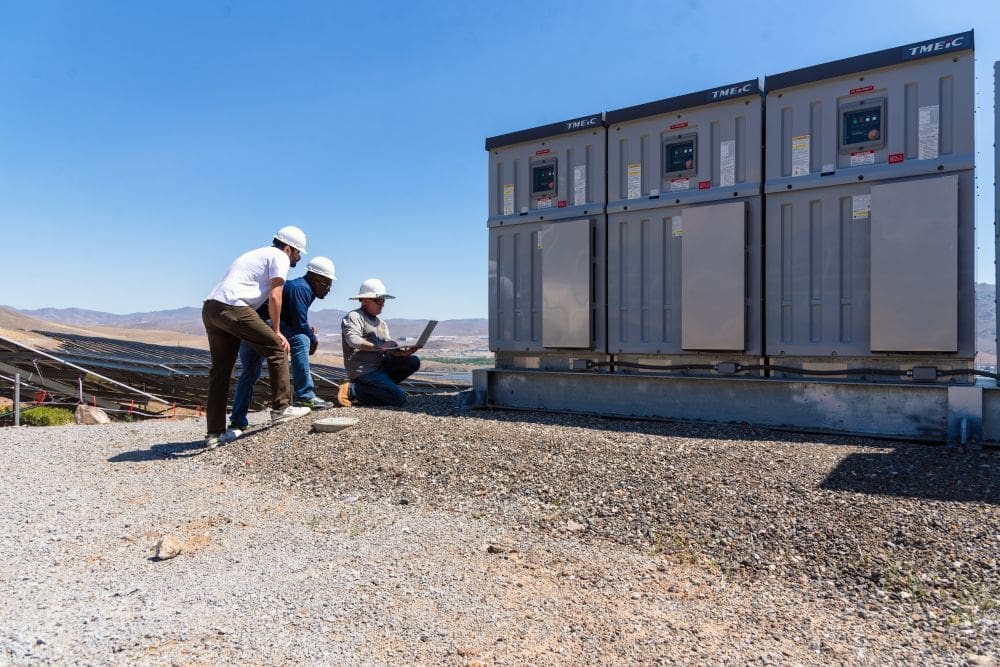Traditional renewable energy asset management has been plagued by data silos, manual processes, and disconnected systems. Asset owners are increasingly exposed to revenue losses, regulatory risks, and inefficiencies due to scattered data across spreadsheets and disconnected systems. This fragmented approach becomes particularly problematic when projects transition from development to operations, requiring teams to find and re-enter data in different systems, introducing errors, slowing progress, and obscuring performance insights.
Now more than ever, asset managers need to be proactive rather than reactive. With extreme weather events causing billions in losses annually —28 weather and climate disasters in 2023 alone resulted in losses exceeding $1 billion each. Moreover, multiple small outages across a large portfolio can accumulate quickly, making rapid identification and resolution of issues critical to maintaining profitability. You can’t fix what you can’t see, and you can’t see what is buried in silos. Centralized, real-time data is now mission critical.
Data Driven Asset Management is a Team Effort
Successful asset management isn’t just technical—it’s financial, operational, and regulatory. Different managers have different challenges and responsibilities, but their roles are intrinsically connected and their data needs overlap.
Financial asset managers monitor project financials, ensure accurate contract tracking, and regularly update financial forecasts. They also need to maintain audit-ready documentation and have an eye on compliance for strategic oversight. They require timely access to current and historical data to be efficient and keep operations on track.
Performance engineers ensure data accuracy and need to identify factors causing underperformance. These professionals face time-sensitive challenges, requiring quick issue identification and transparent data quality to conduct thorough analyses without interruption.
Portfolio managers represent the client-facing side of operations, managing multiple projects with a plethora of technical data, contractual obligations and third parties to manage. They need tools that efficiently track progress, anticipate challenges, and enable clear communication of scope and responsibilities. Their pain points include inefficient task tracking, lack of centralized collaboration platforms, and limited flexibility in report generation.
Technical asset managers focus on monitoring energy generation and device performance, capturing every loss and issue with detailed explanations. They require capabilities for in-depth analysis and prompt detection of outages to ensure efficient operations across their portfolios.
Cross-functional collaboration is especially critical when operational, financial, and regulatory teams all rely on shared information.
Choosing a Digital Solution for all Stakeholders
As renewable portfolios grow and become more complex, asset managers face increasing pressure to coordinate across departments, meet evolving compliance demands, and provide timely, accurate insights to investors. Centralized digital solutions tailored for the renewable energy sector, like Radian Digital, can help bridge these gaps, not by adding more tools, but by connecting the right data to the right people at the right time.
 Rather than relying on fragmented systems or re-entering the same data across departments, an integrated platform can capture information at the point of creation during acquisition, development, or operations, and maintain continuity throughout the asset lifecycle.
Rather than relying on fragmented systems or re-entering the same data across departments, an integrated platform can capture information at the point of creation during acquisition, development, or operations, and maintain continuity throughout the asset lifecycle.
Consistent workflows and centralized task tracking improve how teams manage compliance and operations. When approvals, documentation, and reporting are handled through unified processes, rather than email threads or disconnected trackers, teams can move faster and with fewer errors. Tools like Kanban-style boards or shared workspaces can help teams visualize tasks, assign responsibilities, and avoid oversights — ensuring nothing slips through the cracks.
Real-World Success: Sol Systems
Sol Systems manages 7GW portfolio of clean energy projects across North America, using Radian Digital. Adam Polis, Performance Engineering Manager at Sol Systems, emphasizes the critical importance of centralizing information into a “single source of truth” as renewable portfolios grow with more projects and unique investors, each having custom requirements.
The platform handles equipment data from different vendors that produce information in varied formats. Through various API integrations, Sol Systems aggregates this data from different projects into a unified platform, enabling comprehensive monitoring of all assets and rapid problem identification.
 The platform calculates the financial impact of equipment outages, enabling informed decisions on repair prioritization. Each inverter is normalized and mapped to a nested hierarchy broken down by modules per combiner box, ensuring precise correlation throughout the system. This level of detail allows the team to measure the impact of specific outages down to the minute and quantify how kilowatt hours translate to dollar losses.
The platform calculates the financial impact of equipment outages, enabling informed decisions on repair prioritization. Each inverter is normalized and mapped to a nested hierarchy broken down by modules per combiner box, ensuring precise correlation throughout the system. This level of detail allows the team to measure the impact of specific outages down to the minute and quantify how kilowatt hours translate to dollar losses.
This data-driven approach enables Sol Systems to prioritize repairs based on financial impact rather than clearing items from a maintenance list. The platform also allows for characterization of losses with custom fields tailored to individual investor requirements, delivering high-quality, custom reports for any required timeframe.
Scaling Operations: Zero6 Energy’s Journey
With over 30 years of experience in renewable energy, Zero6 Energy demonstrates how modern digital platforms enable operational scaling. Previously collecting data from various sources including SCADA systems and storing it across different software programs, the company faced problematic data silos that hindered efficiency and growth.
Migrating to a digital platform requires careful thought. Karl Neset, Director of Asset Management, reported that the five-month onboarding process to Radian Digital came with weekly meetings to organize data, resulting in efficient tracking of asset performance, timely task management, and centralized correspondence.
 The platform’s compliance management is valuable for Zero6’s diverse portfolio across six states. It tracks compliance obligations, subtasks, documents, reports, due dates, and roles in one location, with automated email alerts helping team members stay on task. All documentation is archived and time-stamped for easy auditing.
The platform’s compliance management is valuable for Zero6’s diverse portfolio across six states. It tracks compliance obligations, subtasks, documents, reports, due dates, and roles in one location, with automated email alerts helping team members stay on task. All documentation is archived and time-stamped for easy auditing.
Zero6’s ambitious scaling plans—onboarding over 30 wind turbines, a new hydroelectric power plant, various EV charging sites across five states, and potentially thermal assets within 24 months—are made possible through the platform’s collaborative capabilities and customizable dashboards that provide transparency for owners and investors.
A Renewable Future Requires Efficient Asset Management
The success stories of Sol Systems and Zero6 Energy demonstrate that digital transformation in asset management isn’t just about technology, it’s about empowering teams to work more efficiently, make data-driven decisions, and ultimately deliver better outcomes for all stakeholders. As renewable portfolios continue to grow in size and complexity, those organizations that embrace comprehensive digital asset management platforms will be best positioned to thrive in this dynamic industry.
Chris Heyer is the Vice President of Sales & Marketing at Radian Generation, a leading provider of integrated software, asset management, compliance, and cybersecurity solutions for renewable energy portfolios.






